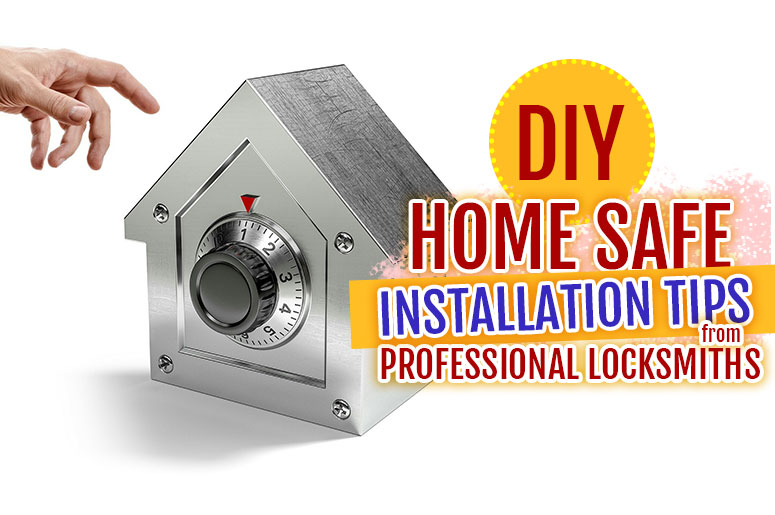Home Safe Installation
DIY Home Safe Installation Tips from Professional Locksmiths
When it comes to home security, purchasing a safe is one of the best investments you can make. Once you’ve decided on a safe, however, the next challenge is to figure out where and how to put it. In this guide, we’re sharing with you advice from experts on how you can perform a DIY home safe installation so you can save some money.
Preparing for a Home Safe Installation
Most personal home safes include an instruction manual and an installation kit that also serves as a repair kit, making a DIY installation a relatively simple project. Examples of what you can expect to find in the installation kit are a socket set, screwdrivers, drill bits, and a drill. The instructions may differ for other safes, such as when you are dealing with fireproof safes for home use. Additional tools may also be necessary depending on the type of flooring or wall you want to fix your safe to. For example, you may need a pair of heavy-duty shears or scissors to cut the carpeting if you need access to the underlayment. Lastly, clean and prepare the area prior to installing the safe. Make sure there are no electrical wires or pipes that may complicate the installation. Also, all shelves should be removed from the safe during the installation process.
Installing on Concrete Floors:
Position your safe in the desired installation point. Next, open the safe and use a marker to note where the pre-drilled holes are in the base. Set the safe aside for now while you prepare your drill with the appropriate size of bit (as per the instructions). Once the sizing is perfect, take the raw plugs from the fixing kit and place them into the holes, then put the safe atop them. The last step is to then screw the bolts into the pilot holes and secure the safe to your concrete foundation, being careful not to ruin the flooring.
Installing on Wooden Floors:
The instructions for a DIY home safe installation on wooden floors are the same as above, but with other special considerations. Wooden floors usually aren’t enough to affix a safe to. Because of this, it’s best to find a space for the safe where a floor joist is present. Moreover, the installation kit may not come with the proper bolts for wood installations. You will need to get your own long coach bolts that reach deep enough to penetrate the joists. From there, you will then need to secure them with a nut.
Wall Safe Installation:
The first step for a personal home safe wall installation is to locate the studs in your walls. Next, mark them with a pencil and begin to carefully cut a hole that fits the length and width of your vault. It’s best to start small and slowly enlarge the hole until it’s the correct size. The next step is to insert the vault with the door open. Once it’s inserted, mark the starter holes (there should be two on each side). Remove the vault and start drilling in the studs. Slide the safe back, then fasten the screws into the studs.
Installing Your Own Safe Doesn’t Have to Be Hard
Most people are intimidated to perform their own home safe installation. The key to doing it successfully is preparation. Take your time, make sure you have everything you need, and visualize each step of the process so you know what to expect. Additionally, don’t be afraid to ask for professional help or advice so you can approach the project with more confidence.



 1300 405 200
1300 405 200
